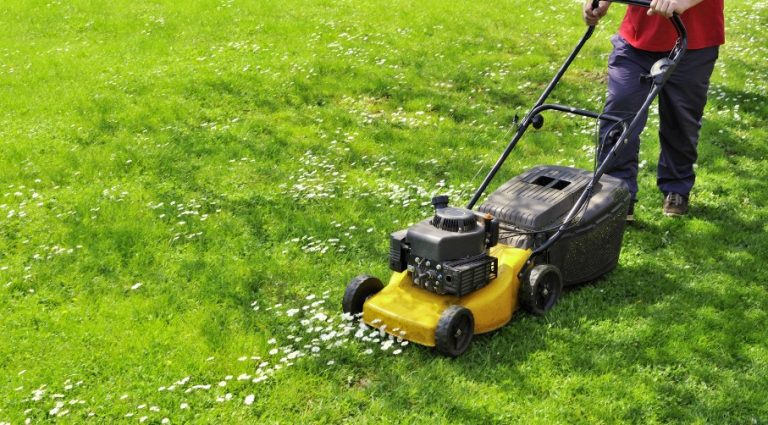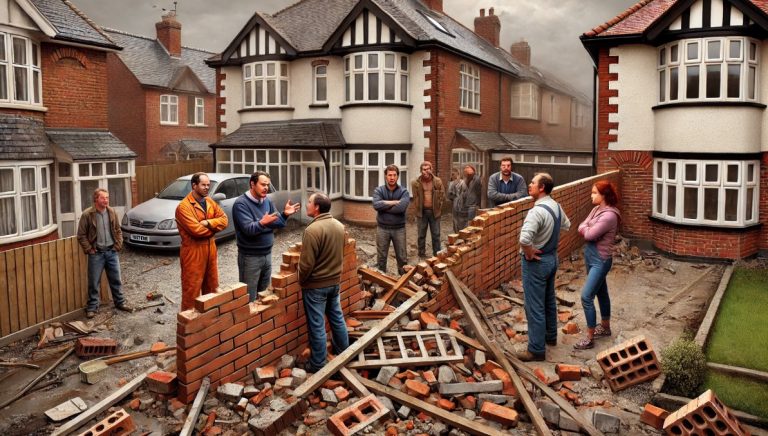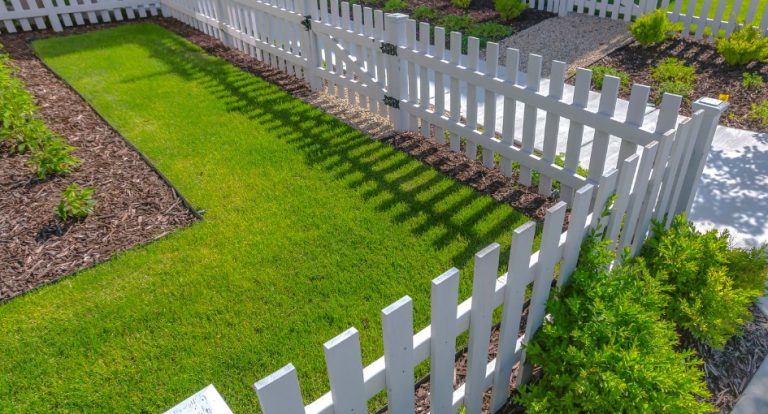Maintaining a lush, healthy lawn is a top priority for many homeowners, but the unpredictable UK weather can sometimes throw a wrench in even the best-laid lawn care plans.
One of the most common questions people ask is, “Can you mow grass when wet?” Whether it’s due to a light drizzle or a torrential downpour followed by damp conditions, the answer isn’t straightforward.
While it’s possible to mow wet grass, it comes with risks and challenges that may impact both your lawn and your lawn mower.
In this detailed guide, we will discuss the potential dangers of mowing wet grass and provide useful tips on how to mow safely, keep your lawn healthy, and protect your equipment.
Why You Should Be Cautious When Mowing Wet Grass?
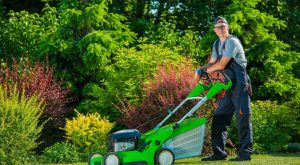
So, can you mow grass when wet? The short answer is yes, but it’s generally not advisable unless absolutely necessary. Wet grass behaves differently from dry grass, which affects how well your lawn mower performs and the health of your lawn after it’s been cut.
The primary issue with mowing wet grass is that it tends to clump together, which can create a host of problems. When grass is damp, it sticks to the blades of the mower, leaving uneven patches across your lawn.
This not only looks unsightly but also inhibits proper regrowth, leading to a patchy, unhealthy lawn. Additionally, these clumps of wet grass can block the mower deck, causing the machine to bog down or even stop working.
Furthermore, cutting wet grass can cause the grass blades to tear rather than be cleanly cut. Torn grass blades are far more susceptible to diseases, particularly fungal infections, which thrive in damp environments.
This means that mowing your lawn when it’s wet can lead to long-term damage that takes time and effort to repair.
So, is it bad to mow wet grass? In most cases, yes. You risk damaging both your lawn and your equipment, not to mention the fact that it’s a less efficient and messier process.
Risks of Cutting Grass After Rain
Mowing your lawn after rain may seem like a quick solution, but it carries several risks to both your lawn and your equipment. Here are the key reasons why you should be cautious about mowing wet grass.
1. Safety Concerns
Wet grass creates slippery surfaces, increasing the risk of losing control of your mower, especially on slopes. For electric mowers, there’s also the danger of electric shock due to moisture. It’s always safer to avoid mowing with an electric mower in wet conditions.
2. Grass Clumping and Uneven Cuts
Wet grass clumps easily, leading to uneven cuts. These clumps can smother healthy grass underneath, blocking sunlight and air. This encourages mold and disease, leaving your lawn vulnerable to damage and a less polished appearance.
3. Soil Compaction
Wet soil is soft and prone to compaction when a mower passes over it. Compacted soil restricts air, water, and nutrients from reaching grass roots, leading to weaker, shallow root systems and poor lawn health in the long term.
4. Lawn Mower Damage
Wet grass builds up under the mower deck, causing blockages and potentially straining the engine. Excessive moisture can also lead to rust or damage to the blades, shortening the mower’s lifespan.
5. Increased Risk of Lawn Diseases
Mowing wet grass can tear the blades rather than slicing them cleanly. Torn grass is more susceptible to fungal diseases like brown patch or dollar spot, which thrive in damp conditions. This can spread across your lawn, causing brown patches and requiring extra care to restore.
How Long to Wait After Rain Before Mowing?
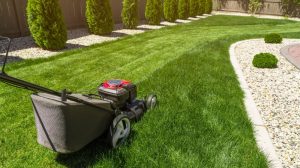
One of the most important considerations when it comes to mowing wet grass is knowing how long to wait after a rainfall before you begin. The timing can vary depending on the intensity of the rain, the type of soil in your lawn, and current weather conditions, but here are some general guidelines to follow.
- Light Rain or Morning Dew: If your lawn has experienced a light shower or is damp from morning dew, you should wait until the grass is mostly dry before mowing. In these conditions, waiting about 2 to 4 hours can give the grass enough time to dry, especially if the sun is out and the weather is warm.
- Moderate Rainfall: For moderate rain, your lawn will need more time to dry out before it’s safe to mow. It’s best to wait around 24 hours after rainfall before mowing. This gives the soil and grass blades time to drain and dry out, reducing the risk of clumping, soil compaction, and mower damage.
- Heavy Rain or Storms: After a heavy downpour or storm, the ground is likely to be waterlogged, and mowing too soon can cause significant damage to both your lawn and your mower. In these cases, it’s advisable to wait at least 48 hours before mowing, and potentially longer if your lawn is slow to dry. You can test the soil by stepping on it—if the soil feels squishy or water pools at your feet, it’s too soon to mow.
- Type of Grass and Soil: The type of grass and soil in your yard can also affect how long you should wait. Lawns with sandy soil will typically drain faster than those with clay soil, which retains water for longer periods. Some grass types, like warm-season varieties (Bermuda or Zoysia), also tend to dry faster than cool-season grasses like fescue or bluegrass. Keep these factors in mind when deciding when to mow.
Signs That Your Lawn is Ready to Mow After Rain
- Dry grass blades: Run your hand through the grass; if it feels dry to the touch, it’s likely safe to mow.
- Firm soil: Step on the grass—if the soil feels firm underfoot and not soggy, you can proceed with mowing.
- Clipping test: Mow a small patch and check if the grass clumps. If it does, the lawn is still too wet; if not, it’s good to go.
By waiting the appropriate amount of time after rainfall, you can avoid damaging your lawn, preventing issues such as soil compaction and uneven cutting. Patience is key when maintaining a healthy lawn during wet weather conditions.
Why You Should Wait for Better Conditions?
Considering the risks to both your lawn and your mower, it’s clear that mowing immediately after rain isn’t ideal. Waiting for the grass to dry out is the best way to ensure a clean cut and protect your lawn from damage.
Generally, it’s advisable to wait at least 24-48 hours after a rainstorm before mowing, depending on the severity of the rainfall and the condition of your lawn. This allows the grass blades to dry and the soil to firm up, reducing the risk of compaction and promoting healthier growth.
Best Practices for Mowing a Wet Lawn
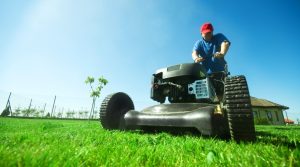
If you find yourself in a situation where you need to mow wet grass, there are ways to do so more safely and effectively. Here are some best practices for mowing a wet lawn that can help reduce the risks:
- Raise the Mower Deck Height: One of the simplest adjustments you can make is to raise the cutting height on your mower. Wet grass is more prone to tearing, and cutting it too short can cause stress, leading to brown, unhealthy patches. Leaving the grass a bit longer allows it to recover more quickly from the cutting process.
- Use Sharp Blades: Wet grass is tougher to cut than dry grass, so dull blades will only worsen the problem by ripping the grass rather than slicing it cleanly. Make sure your mower blades are sharpened before you begin, as this will provide a cleaner cut and reduce the strain on the mower’s engine.
- Mow Slowly and Carefully: Take your time when mowing wet grass. Moving too quickly can cause your mower to clog with wet clippings, and you’re more likely to miss spots. Slowing down gives the mower a chance to handle the thick, damp grass more effectively, resulting in a more even cut.
- Clean the Mower Deck Frequently: Wet grass clippings tend to accumulate under the mower deck and around the blades, which can reduce performance and even lead to damage if left unchecked. Stop periodically during mowing to clear out any buildup. This helps the mower continue running smoothly and prevents blockages.
- Consider Mulching with Caution: While mulching can be a great way to recycle nutrients back into the soil, doing so with wet grass can create thick layers that prevent sunlight from reaching the ground, potentially suffocating the grass. Bagging the clippings is often a better option when mowing a wet lawn.
Can You Cut Wet Grass with Different Types of Lawn Mowers?
The type of mower you use plays a crucial role in how well it handles wet grass. If you’re wondering, “Can you cut wet grass with an electric lawn mower?”, the answer depends largely on the design and the conditions. Most standard electric mowers are not built for wet conditions because of the risk of electric shock and the potential damage to the mower’s internal components.
However, some electric mowers come with waterproof features or are insulated to handle damp grass, but even these should be used with caution.
On the other hand, “Can you cut wet grass with a petrol mower?” Petrol mowers are generally more robust and better equipped to handle wet grass because they don’t have the same electrical hazards as electric mowers. However, the increased weight of a petrol mower can compact the soil more easily when the ground is wet, which can damage the grass roots and cause long-term harm to your lawn.
In both cases, it’s essential to pay close attention to the condition of your mower and the terrain of your lawn. Regardless of the type of mower, wet grass puts extra strain on the machine, so regular maintenance, including sharpening blades and cleaning the mower deck, is crucial.
Tips to Prevent Lawn Damage When Wet
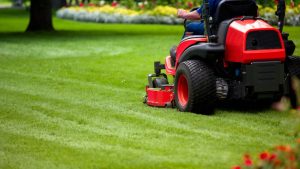
To prevent lawn damage, it’s important to be mindful of the conditions under which you mow. Wet weather poses specific challenges, but you can mitigate the damage by following these tips:
- Avoid Soil Compaction: Wet soil is more prone to compaction under the weight of a mower, especially if you’re using a heavy petrol model. Compacted soil reduces the amount of air, water, and nutrients that can reach the grass roots, which can weaken your lawn over time. If possible, wait until the soil dries out a bit before mowing.
- Bag the Clippings: Wet grass clippings are heavy and tend to clump together. Instead of leaving them on the lawn, which can smother the grass underneath, opt to bag them and dispose of them appropriately. This will help your lawn stay healthy and prevent the spread of diseases that thrive in wet environments.
- Mow in Different Directions: Mowing in the same direction repeatedly can lead to rutting and uneven cutting. By changing the mowing pattern each time, you distribute the weight of the mower more evenly, which is especially important when the ground is wet.
How to Care for Your Lawn Mower After Mowing Wet Grass?
Once you’ve finished mowing wet grass, it’s important to take proper care of your lawn mower to ensure it continues running efficiently. Wet grass is more likely to stick to the underside of the mower, which can lead to corrosion and rust if not cleaned properly.
Here’s how to care for your mower after mowing wet grass:
- Clean the Blades and Deck: Wet grass can quickly build up under the mower deck, so it’s important to scrape off any residue after each use. Leaving wet clippings on the deck can lead to rust, which reduces the lifespan of your mower and affects its performance.
- Check for Moisture in the Engine: If you’re using a petrol mower, ensure that water hasn’t seeped into the engine or fuel tank. Excess moisture can cause the engine to stall or fail, so dry off the machine thoroughly before storing it.
- Dry the Mower Thoroughly: After mowing, wipe down the entire mower to remove any lingering moisture. Pay particular attention to areas like the blades, wheels, and undercarriage where grass clippings are most likely to stick.
Alternatives to Mowing Wet Grass
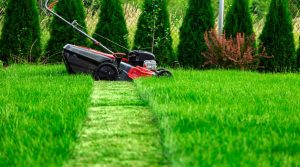
If possible, it’s always better to wait until your lawn has dried before mowing. However, if you’re pressed for time or the weather simply isn’t cooperating, you can try these alternatives to help manage your lawn without mowing wet grass:
- Let the Grass Dry: Even if it’s just for a few hours, waiting until the grass has dried slightly can make a big difference. If you’re dealing with morning dew or light rain, the sun can help dry the grass by midday, making mowing safer and easier.
- Use a Leaf Blower: If your lawn is only slightly wet, using a leaf blower to clear excess moisture can speed up the drying process. This is particularly helpful if you’re trying to avoid clumping and uneven cutting.
- Wait for Better Weather: Sometimes, the best option is to simply wait. If the forecast shows a few days of dry weather ahead, it’s worth holding off on mowing to avoid the risks of wet grass altogether.
Common Mistakes When Mowing Wet Grass and How to Avoid Them
When mowing wet grass, it’s easy to make mistakes that can lead to damage to both your lawn and your mower. Here are some common errors and how to avoid them:
- Cutting the Grass Too Short: Wet grass is more prone to stress and damage, so cutting it too short can exacerbate the problem. Always raise the mower deck to avoid scalping the lawn.
- Mowing with Dull Blades: Dull mower blades can tear wet grass rather than cutting it cleanly, leading to frayed grass tips and increased susceptibility to diseases. Sharpen the blades before mowing to ensure a cleaner cut.
- Failing to Check the Mower: Wet grass can quickly clog up your mower, so it’s important to check the machine frequently while mowing. Clear out any clumps and make sure the mower deck and blades are clean before you continue.
Lawn Care in Wet Weather: A Guide to a Healthy Lawn Year-Round
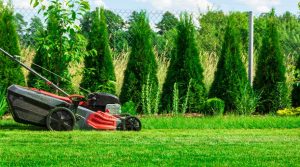
Caring for your lawn in wet weather requires a different approach than during dry periods. To keep your grass healthy year-round, it’s important to adjust your lawn care routine according to the seasons and the amount of rainfall.
During rainy seasons, you should:
- Monitor for Fungal Diseases: Wet weather increases the likelihood of fungal infections like brown patch or dollar spot. Keep an eye on your lawn and treat any diseases promptly to prevent them from spreading.
- Avoid Overwatering: When it rains frequently, your lawn doesn’t need additional watering. Overwatering can lead to waterlogged soil, which weakens the grass roots and encourages disease.
- Aerate the Soil: Aerating your lawn helps to relieve soil compaction and allows water, air, and nutrients to penetrate more deeply into the soil. This is especially beneficial during wet periods when the ground is more likely to become compacted.
By following these tips, you can maintain a healthy lawn even in the rainiest of conditions.
Conclusion
In conclusion, while it is possible to mow grass when wet, it’s not recommended unless absolutely necessary. Mowing in wet conditions can lead to uneven cuts, lawn diseases, and mower damage if not done correctly.
By following the best practices outlined in this guide—such as raising your mower blades, mowing slowly, and keeping your equipment clean—you can minimize the risks and keep your lawn looking healthy and green, even after a downpour.
What Are the FAQs About Mowing a Wet Lawn?
Is it ok to cut grass when wet?
Yes, you can cut wet grass, but it’s not ideal. Wet grass is harder to mow cleanly, and there’s a higher risk of damaging both the grass and your mower.
Can you mow lawn when wet without damaging it?
It’s possible to mow wet grass without causing damage if you follow best practices such as raising the cutting height, using sharp blades, and mowing slowly.
What happens if you mow wet grass frequently?
Frequent mowing of wet grass can lead to long-term lawn damage, such as compacted soil, increased susceptibility to disease, and an uneven cut.
How can you prevent mower damage when cutting wet grass?
To prevent damage to your mower, regularly clean the mower deck and blades, keep the mower dry after use, and check for blockages frequently during mowing.
What are the safety tips for using an electric lawn mower in wet conditions?
Avoid using electric mowers in wet conditions unless they’re specifically designed for it. Water can cause electric shock or damage to the mower’s internal components, so it’s safer to wait until the grass is dry.
Does cutting wet grass cause lawn disease?
Yes, cutting wet grass can lead to lawn diseases, particularly fungal infections. Wet, torn grass is more vulnerable to pathogens that thrive in damp environments.
Can petrol mowers handle wet grass better than electric ones?
Yes, petrol mowers are generally better suited to handling wet grass because they don’t have the same electrical risks as electric mowers. However, they can still face issues with clumping and engine strain in wet conditions.


